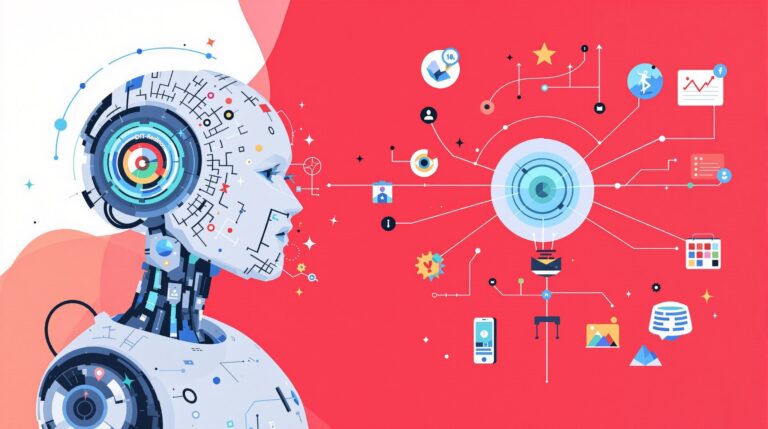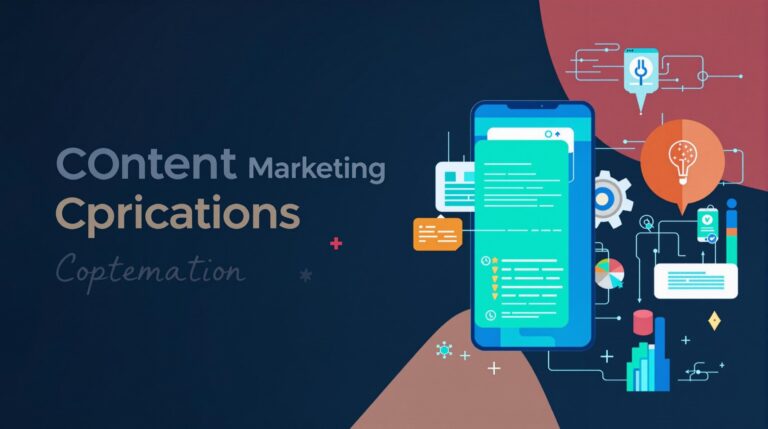When and Where to Inject Human Touch in Automated Content
In today’s digital landscape, finding the sweet spot between efficiency and authenticity requires strategic implementation of human touch in AI content creation processes. As automated tools become increasingly sophisticated, understanding when and where to inject human expertise becomes a critical differentiator for brands seeking to maintain audience connection while leveraging technological advancements.
Key Takeaways
- 72% of B2B marketers use AI for content creation, yet 61% lack formal guidelines for ethical use
- Brands that blend AI efficiency with human editing see 30% higher engagement rates than fully automated content
- Human intervention is most critical during strategy development and quality assurance stages
- Effective content personalization requires balancing automated data analysis with human storytelling expertise
- Implementing a clear governance framework helps maintain brand authenticity while maximizing AI benefits
Finding Balance: The Need for Human Touch in AI Content
The statistics tell a compelling story about the current state of AI in content marketing. While 72% of B2B marketers have embraced generative AI for content creation, a concerning 61% operate without formal guidelines for its ethical or effective use. This gap in governance creates significant risks for brands rushing to adopt automation without strategic oversight.
Consumer sentiment further reinforces the need for balance. About 65% of audiences disengage with generic, fully automated content, preferring personalized narratives that feel authentic and relatable. Additionally, 45% of consumers report distrust in brands relying solely on AI-generated content, citing concerns about accuracy and connection.
The most successful content strategies don’t view human touch in AI as optional—they see it as essential. Organizations that thoughtfully blend automation with human expertise see 30% higher engagement rates than those using purely automated approaches. This hybrid model allows brands to scale content production while maintaining the quality and relevance that audiences demand.
Amazon’s discontinued recruitment tool serves as a cautionary tale of insufficient human oversight. The AI system demonstrated bias against women, forcing the company to abandon it. This example highlights how automation without proper human guidance can perpetuate harmful patterns rather than solving problems.

Content Strategy and Ideation: Where Human Creativity Meets AI Efficiency
The ideation phase represents a perfect opportunity for balancing automation with human creativity. AI tools excel at analyzing data patterns and identifying keyword opportunities, but human strategists ensure these insights align with brand values and audience needs.
Research indicates that 88% of top-performing blogs use hybrid AI-human workflows for topic selection. This approach combines the computational power of AI with the intuitive understanding that experienced content strategists bring to the table.
Several tools demonstrate this partnership effectively:
- BrandWell’s keyword research tool can generate comprehensive 3,000-word drafts in just 10 minutes
- Clearscope provides data-driven content optimization suggestions while leaving room for creative interpretation
- HubSpot’s Content Strategy Generator offers initial ideas that human strategists can refine and elevate
The contrast between fully automated ideation and human-AI collaboration is stark. Purely algorithm-driven approaches often produce generic listicles lacking depth, while collaborative methods yield data-informed thought leadership pieces that resonate with specific audience segments. This balance makes content automation worth implementing without sacrificing creativity.
Personalization That Resonates: Adding Human Elements to Automated Communications
Content personalization represents another area where human intervention significantly improves outcomes. Personalized emails with strategic human touches achieve 50% higher open rates than generic templates, demonstrating the value of authentic connection.
Dynamic content modules powered by automation tools like Zapier or Mailchimp see 35% better conversion rates when combined with thoughtful manual segmentation. This performance boost occurs because humans understand nuanced audience differences that algorithms might miss.
An effective approach uses AI for baseline personalization while reserving human input for more sophisticated elements:
- AI handles name insertion, location-based references, and basic preference mapping
- Human writers craft nuanced storytelling that connects with emotional drivers
- The combined approach creates relevance at scale without sacrificing authenticity
Netflix’s recommendation system exemplifies this hybrid model, blending algorithmic suggestions with human-curated categories. The algorithms identify viewing patterns, but human curators create thematic collections that resonate with cultural moments and audience interests. This approach to automating blog posts without quality loss maintains the human element that audiences crave.
Visual Storytelling: Balancing AI-Generated and Human-Curated Imagery
Visual content presents unique challenges and opportunities for human-AI collaboration. Research shows that 65% of users prioritize blogs with human-curated visuals over AI-generated images. This preference stems from subtle quality differences that audiences can detect, even if they can’t articulate them.
Modern AI image tools like DALL-E 3 and Midjourney reduce production time by approximately 40%, making them valuable for scaling visual content. However, human designers remain essential for ensuring brand consistency and emotional resonance.
A balanced approach to visual content might include:
- Creating Canva templates for automated batch processing of routine images
- Reserving human designers for hero images that anchor important content
- Using AI to generate initial visuals that human editors refine to match brand guidelines
The difference between generic AI visuals and human-edited outputs is significant. While an AI might generate a technically correct image, a human editor can adjust color schemes, composition, and subtle elements to match brand palettes and evoke specific emotional responses from the audience.
Quality Assurance: The Human Editor’s Critical Role
Perhaps nowhere is human involvement more critical than in quality assurance. Studies show that human-edited AI content achieves 90% factual accuracy compared to just 70% for raw AI output. This 20% gap can make the difference between trusted content and damaging misinformation.
Automated editing tools like Grammarly and Hemingway Editor effectively handle about 85% of grammatical and style issues. However, human editors address tone, nuance, and contextual appropriateness that these tools can’t fully evaluate.
An effective three-step editing process integrates both approaches:
- AI tools conduct initial grammar, spelling, and readability checks
- Human editors refine tone, flow, and contextual accuracy
- Subject matter experts or legal teams review for compliance and technical accuracy
The New York Times’ approach to AI-assisted articles provides an instructive case study in maintaining editorial standards. While embracing automation for data analysis and initial drafting, the publication maintains rigorous human oversight to ensure accuracy and journalistic integrity. This commitment to quality has allowed them to increase output without compromising the trust readers place in their content.
Tools for Every Automation Level: Creating the Optimal Tech Stack
Different content workflows require varying degrees of automation. A thoughtfully designed tech stack can support different automation levels while preserving opportunities for human input where it matters most.
For light automation needs, tools like Grammarly (for grammar checks), Google Alerts (for trend monitoring), and Canva Templates (for batch image processing) provide efficiency without sacrificing control. These tools enhance human capabilities rather than replacing them.
Medium automation workflows might incorporate ChatGPT for draft generation, BrandWell for complete blog posts with plagiarism checks, and Clearscope for SEO optimization. These tools handle more substantial content creation tasks while still providing clear intervention points for human editors.
Heavy automation approaches could include Curata for content syndication and Adobe Firefly for AI-driven design. Even at this level, strategic human oversight remains essential for maintaining brand standards and audience connection.
The key to success lies in understanding how each tool fits into your specific content workflow. Some organizations have even created fully automated content marketing roles that strategically incorporate human touch points throughout otherwise automated processes.
Creating a Human-AI Governance Framework for Content
Given that 61% of marketers lack formal guidelines for AI use, developing a comprehensive governance framework represents a significant opportunity. Such frameworks should address ethical standards and bias mitigation while establishing clear roles for human and automated processes.
Effective governance includes feedback loops that continuously improve both human and AI performance. Tools like Hotjar can gather audience insights that inform refinements to both AI models and human editorial guidelines.
Hybrid publishing calendars offer a practical implementation of these governance principles. These calendars strategically schedule different content types, such as:
- AI-generated quick-turn news summaries
- Human-written thought leadership pieces
- Hybrid content that leverages both approaches for optimal results
Leading brands have found success by documenting specific use cases for AI and establishing clear review protocols for different content types. These protocols vary based on risk level, audience sensitivity, and brand importance.
The most successful approaches to AI content don’t view human touch as optional—they see it as the essential element that transforms good content into great content. By thoughtfully implementing automation while preserving human creativity, editorial judgment, and ethical oversight, brands can achieve both efficiency and authenticity.
Sources
FasterCapital: Balancing Automation with Human Touch in Content Creation
BrandWell: How Can You Automate Your Blog Content?
DigitalMarketer: Harnessing AI with a Human Touch
Search Engine Land: 3 Ways to Add a Human Touch to AI-Generated Content
Royal Cyber: Why Artificial Intelligence Requires Human Intervention?








